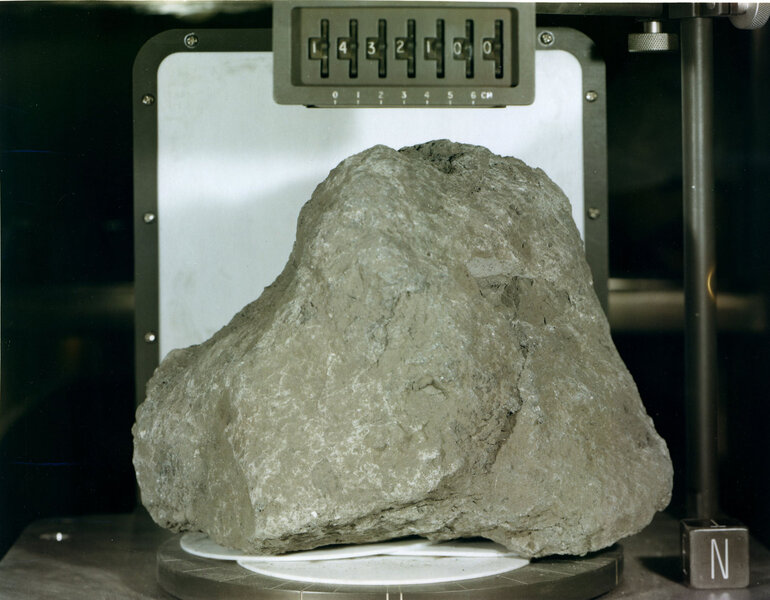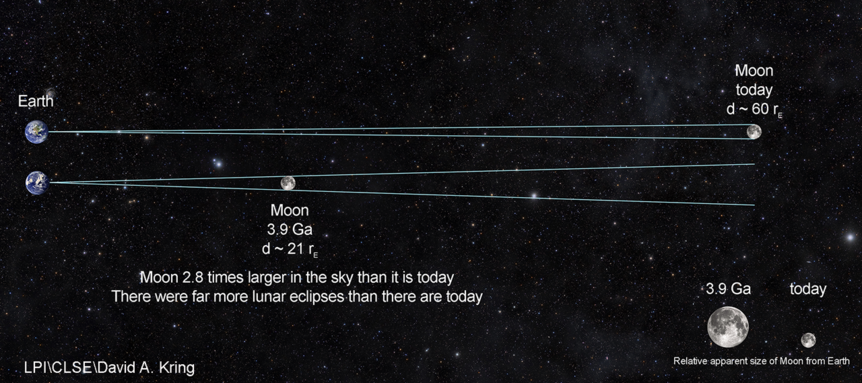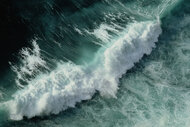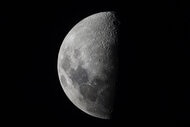Create a free profile to get unlimited access to exclusive videos, sweepstakes, and more!
One of Earth’s oldest rocks may have been found… on the Moon
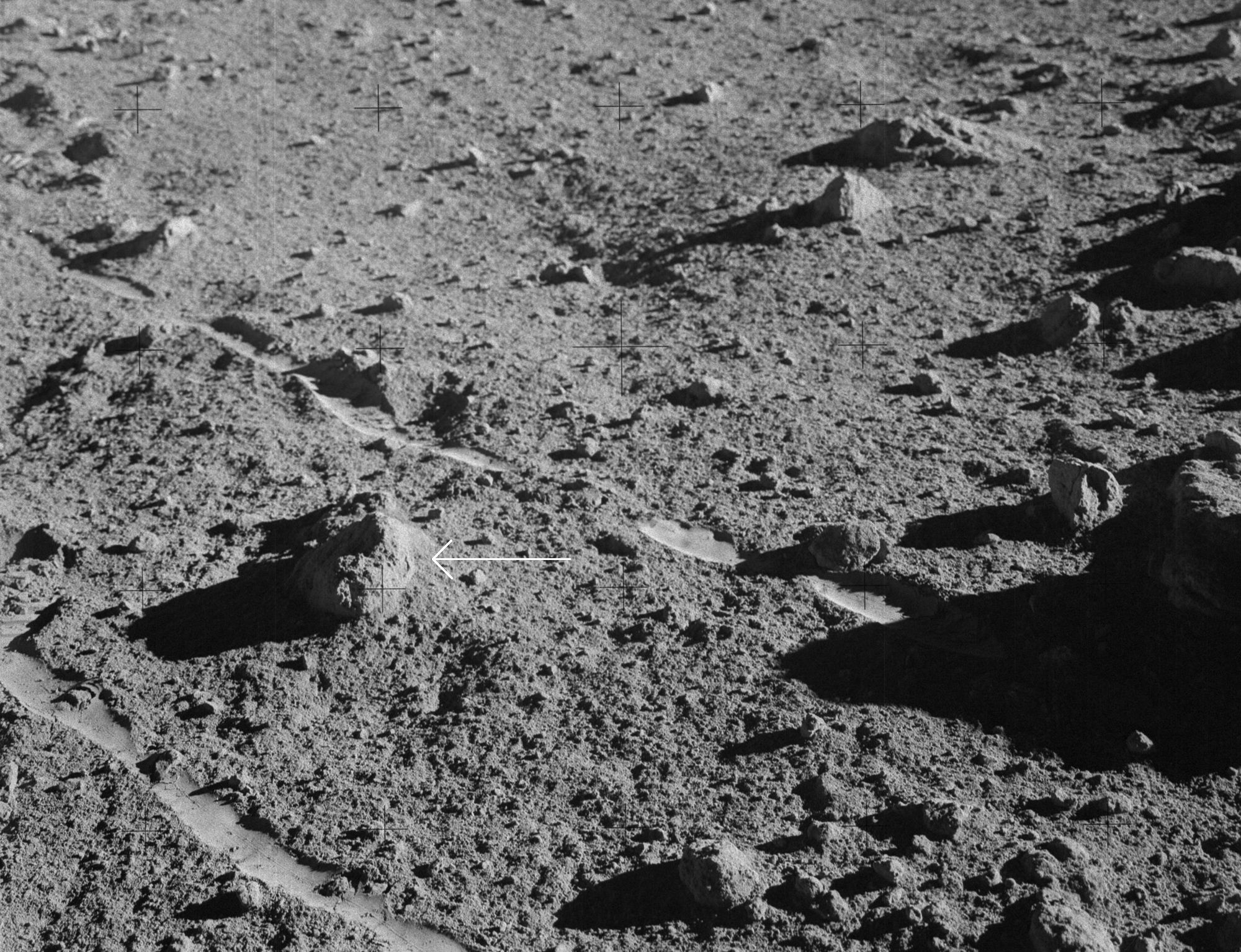
The Earth has been around for 4.55 billion years, a decently long time. You might expect we’d have lots of rocks lying around that are very nearly that old, but in fact they’re hard to find. The Earth is active, with erosion destroying old material, stuff getting subducted down into the deep crust or mantle, and new land created by volcanoes burying older material. In fact, finding truly ancient (say, more than four-billion-year-old) rocks is tough.
But maybe we’ve been looking in the wrong place. A team of planetary scientists with the Center for Lunar Science and Exploration (CLSE) has just announced they found an extremely old Earth rock on the Moon.
Yeah, I know. But it makes sense.
The rock in question is part of a much larger one found on the Moon by the Apollo 14 astronauts. It’s officially called 14321 — nicknamed Big Bertha — with a mass of about 9 kilograms and a width of about 23 centimeters. It was found near the 300-meter-wide Cone impact crater, which itself is inside the much larger 80-kilometer-wide Fra Mauro crater. Cone is on a large series of hills running through Fra Mauro, and that’s important: The material forming those hills is thought to have been ejected by the much larger impact that formed Mare Imbrium, a lava flood plain well over 1,000 kilometers across. After the impact, that stuff rained down on Fra Mauro, creating those hills.
Why is that important? Given that it’s part of the Fra Mauro formation and therefore ejected during the Imbrium impact, it’s likely rock 14321 came from deep down in the lunar crust, from 30 – 70 kilometers deep, near the base of the crust, and was blown out by the ferocious energy of the impact. You’d expect then that it would show signs of forming around that deep in the lunar crust. Hold that thought …
As the largest rocks brought back by that Apollo 14, and one of the largest for any Apollo mission, 14321 has been studied extensively. But the team of scientists at CLSE developed a new technique that can distinguish bits of rock that came from the impactor itself from the material around it. That raised a curious question: Could they find samples of rock that came from Earth inside Moon rocks?
The answer is: Yes! Well, probably. The evidence is pretty good.
Rock 14321 is a breccia, composed of different rocks cemented together. The pieces, called clasts, can have very different compositions and structures. One clast with a mass of just under 2 grams was studied some years ago, and fragments from it (created when the clast was sawed off the main rock) under a millimeter in size were examined using this new technique. The scientists found it to be pretty peculiar. The titanium and zircon in it showed signs of crystallizing at a depth of 167 km, much deeper than you’d expect for Imbrium ejecta. The structure also indicated it formed at lower temperatures than expected for lunar magma, and in a higher oxygen environment than the Moon had 4 billion years ago.
But … those numbers match pretty well for conditions on Earth at that time! This was the Hadean Era, 4.6 to 4 billion years ago, when the Earth was cooling after it initially formed. Given that, the clast from 14321 probably formed 20 or so km deep in the new Earth’s crust, something like 4. – 4.1 billion years ago.
So how did a piece of Earth get on the Moon? Probably from a big impact. Some huge asteroid hit the Earth, hard, and material from the Earth was dug up from deep down and ejected with so much energy it left the planet entirely, launched into space. Back then, the Moon was much closer to Earth than it is now, about a third the current distance of 380,000 km. This made it easier to get to the Moon, and the rock landed there.
Not long after it hit the Moon, disaster struck again. An asteroid over 200 km wide slammed into the Moon, creating the Imbrium basin. The explosion swept up our hapless rock, mixing it together with lunar material, and throwing it over to Fra Mauro.
And there it sat for four billion years, until Al Shepard picked it up in 1971.
So is this the oldest Earth rock ever found? It very well could be, but it’s hard to say. The oldest terrestrial material ever found is zircon crystal over 4.4 billion years old. But that’s not really a rock, which is an aggregate of minerals together. The oldest Earth rock is the Acasta Gneiss, dated at an age of 4.03 billion years.
The exact age of the clast from 14321 isn’t that well known, but given that it’s likely older than 4.0 billion years, that makes it a very strong contender for the oldest Earth rock ever found.
And it was found on the Moon. That’s pretty nifty. It makes me wonder what else we’re likely to find up there. A giant impact from the more recent past could have thrown rocks into space after life formed here on Earth. Wouldn’t that be interesting? Hmmm …
But that’s speculation, and there’s a long way to go here. And not to be lost in all this is that we’re still learning new things from rocks brought back to Earth 50 years ago! There’s over 380 kilograms of rocks in the complete Apollo collection returned to Earth. What other scientific wonders are still hidden within?
